Elinor Ostrom_tragedy of the commons
- 格式:pdf
- 大小:137.17 KB
- 文档页数:7
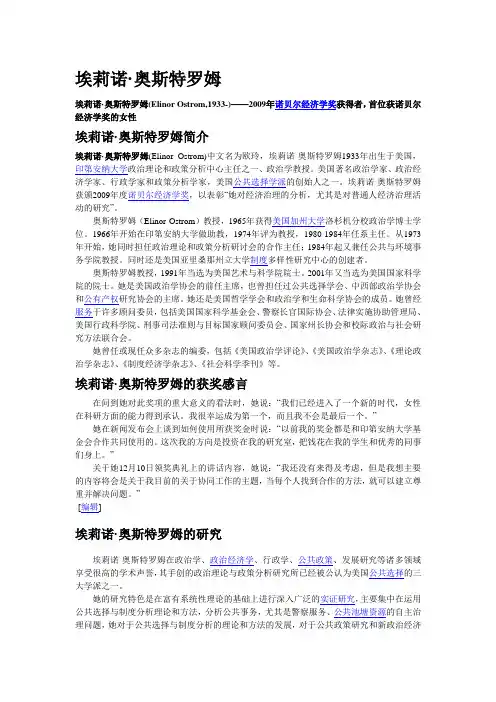
埃莉诺·奥斯特罗姆埃莉诺·奥斯特罗姆(Elinor Ostrom,1933-)——2009年诺贝尔经济学奖获得者,首位获诺贝尔经济学奖的女性埃莉诺·奥斯特罗姆简介埃莉诺·奥斯特罗姆(Elinor Ostrom)中文名为欧玲,埃莉诺·奥斯特罗姆1933年出生于美国,印第安纳大学政治理论和政策分析中心主任之一、政治学教授。
美国著名政治学家、政治经济学家、行政学家和政策分析学家,美国公共选择学派的创始人之一。
埃莉诺·奥斯特罗姆获颁2009年度诺贝尔经济学奖,以表彰“她对经济治理的分析,尤其是对普通人经济治理活动的研究”。
奥斯特罗姆(Elinor·Ostrom)教授,1965年获得美国加州大学洛杉机分校政治学博士学位。
1966年开始在印第安纳大学做助教,1974年评为教授,1980-1984年任系主任。
从1973年开始,她同时担任政治理论和政策分析研讨会的合作主任;1984年起又兼任公共与环境事务学院教授。
同时还是美国亚里桑那州立大学制度多样性研究中心的创建者。
奥斯特罗姆教授,1991年当选为美国艺术与科学院院士。
2001年又当选为美国国家科学院的院士。
她是美国政治学协会的前任主席,也曾担任过公共选择学会、中西部政治学协会和公有产权研究协会的主席。
她还是美国哲学学会和政治学和生命科学协会的成员。
她曾经服务于许多顾问委员,包括美国国家科学基金会、警察长官国际协会、法律实施协助管理局、美国行政科学院、刑事司法准则与目标国家顾问委员会、国家州长协会和校际政治与社会研究方法联合会。
她曾任或现任众多杂志的编委,包括《美国政治学评论》、《美国政治学杂志》、《理论政治学杂志》、《制度经济学杂志》、《社会科学季刊》等。
埃莉诺·奥斯特罗姆的获奖感言在问到她对此奖项的重大意义的看法时,她说:“我们已经进入了一个新的时代,女性在科研方面的能力得到承认。
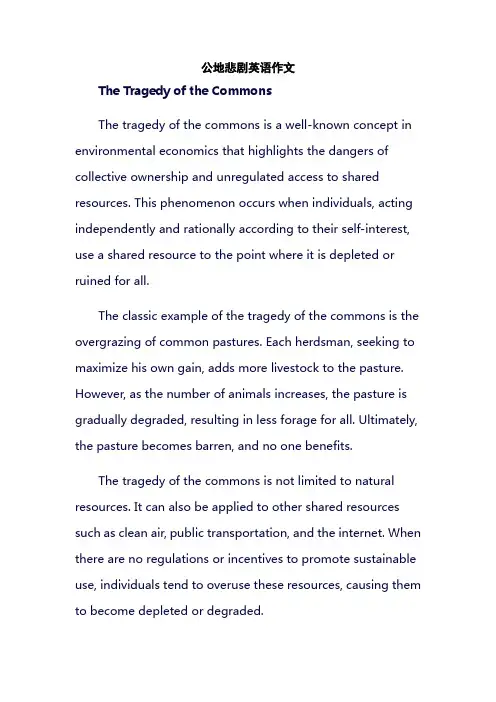
公地悲剧英语作文The Tragedy of the CommonsThe tragedy of the commons is a well-known concept in environmental economics that highlights the dangers of collective ownership and unregulated access to shared resources. This phenomenon occurs when individuals, acting independently and rationally according to their self-interest, use a shared resource to the point where it is depleted or ruined for all.The classic example of the tragedy of the commons is the overgrazing of common pastures. Each herdsman, seeking to maximize his own gain, adds more livestock to the pasture. However, as the number of animals increases, the pasture is gradually degraded, resulting in less forage for all. Ultimately, the pasture becomes barren, and no one benefits.The tragedy of the commons is not limited to natural resources. It can also be applied to other shared resources such as clean air, public transportation, and the internet. When there are no regulations or incentives to promote sustainable use, individuals tend to overuse these resources, causing them to become depleted or degraded.To avoid the tragedy of the commons, it is crucial to establish effective management and regulatory mechanisms. This can include limiting access to shared resources, imposing penalties for misuse, and creating incentives for sustainable practices. By doing so, we can ensure that shared resources are used in a way that benefits all and preserves them for future generations.。
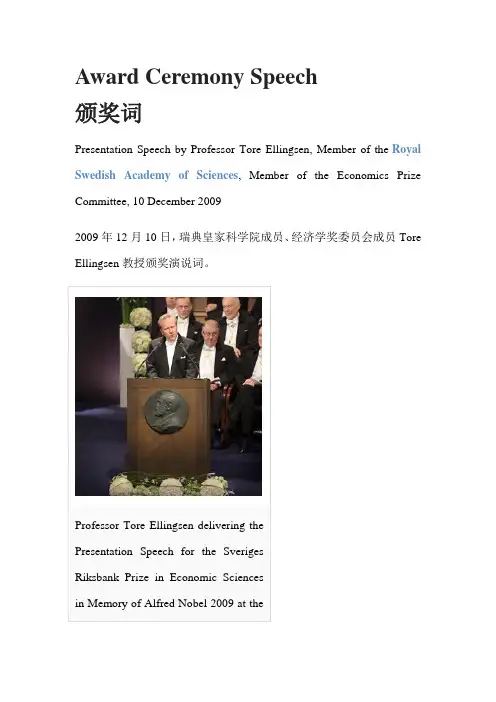
Award Ceremony Speech颁奖词Presentation Speech by Professor Tore Ellingsen, Member of the Royal Swedish Academy of Sciences, Member of the Economics Prize Committee, 10 December 20092009年12月10日,瑞典皇家科学院成员、经济学奖委员会成员Tore Ellingsen教授颁奖演说词。
Stockholm Concert Hall.Copyright © The Nobel Foundation2009Photo: Frida Westholm图为2009年斯德哥尔摩音乐厅,Tore Ellingsen教授在纪念阿尔弗雷德·诺贝尔经济科学奖颁奖典礼上致辞。
Your Majesties, Your Royal Highnesses, Laureates, Ladies and Gentlemen,尊敬的国王和王后陛下、各位获奖者、女士们、先生们:Two hundred seventy years ago, on June 2, 1739, Carl Linnaeus and five other men founded the Royal Swedish Academy of Sciences. For the last one hundred eight years, the Academy has selected the Laureates in Physics and Chemistry. For the last forty years it has selected the Laureates in Economic Sciences.两百七十年前的1739年六月二日,Carl Linnaeus等六人创立了瑞典皇家科学院。
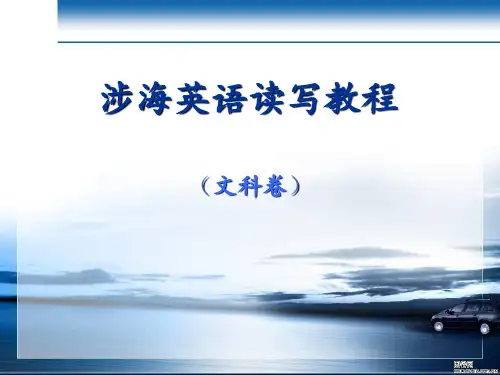
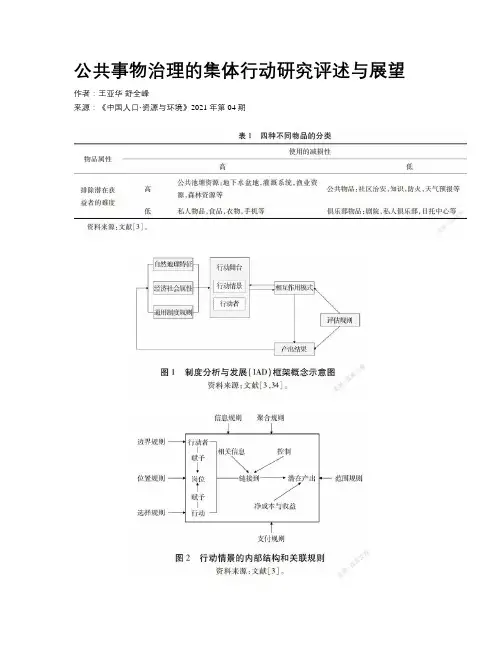
公共事物治理的集体行动研究评述与展望作者:王亚华舒全峰来源:《中国人口·资源与环境》2021年第04期摘要“公地悲剧”是人口和资源环境管理面临的经典问题。
过去半个多世纪以来,在围绕治理“公地悲剧”的学术探讨中,诞生了公共事物(Commons)治理的新兴学科方向。
开展有效的集体行动是解决“公地悲剧”问题的关键,集体行动理论由此成为公共事物治理知识体系的精华。
文章评述了公共事物治理中的集体行动理论进展,通过对集体行动的概念、经典理论框架、具体影响因素及机制的系统梳理,为人口和资源环境管理研究提供理论参考。
文章还分析了公共事物治理研究在我国的现状和前景,认为推进中国情境下的公共事物治理研究,还有许多方面有待进一步探索:第一,聚焦中国特色的制度环境和本土实践,开展更多中国情境下的公共事物治理研究;第二,关注城市社会和数字时代的新兴公共事物,推动城市空间和数字空间治理的集体行动研究;第三,重视集体行动中的微观个体行为与动机,积极运用实验方法,引入行为心理学视角,探究集体行动的微观机制;第四,应对新技术给公共事物治理带来的机遇和挑战,探讨如何利用新技术增进公共事物治理中的集体行动。
公共事物治理理论、方法和政策上的不断提升,可以为解决中国情境下的“公地悲剧”问题做出越来越多的知识贡献。
关键词公地悲剧;公共事物;公共治理;集体行动;奥斯特罗姆中图分类号 F323.213 文献标识码 A 文章编号 1002-2104(2021)04-0118-14 DOI:10.12062/cpre.20210113“公地悲剧”是全人类共同面临的难题,也是人口和资源环境管理以及公共管理的经典问题。
1968年,加勒特·哈丁(Garrett Hardin)在《科学》杂志发表《公地悲剧(The Tragedy of the Commons)》论文,从那时以来围绕“公地悲剧”的研究中,诞生和发展了公共事物治理(Governing the Commons)这一交叉学术领域。
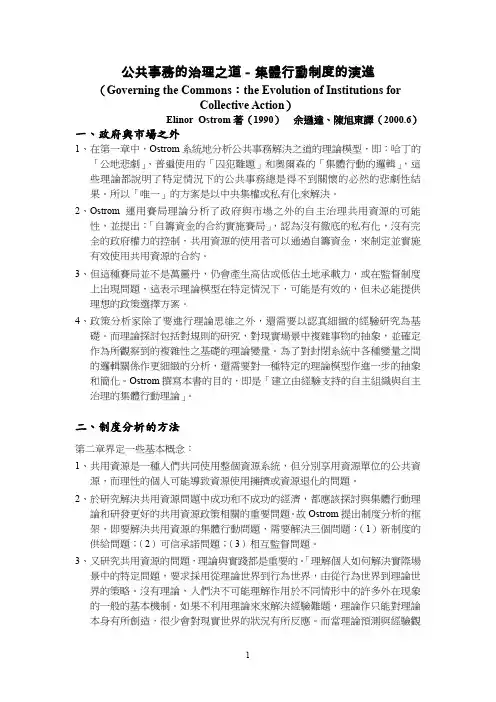
公共事務的治理之道-集體行動制度的演進(Governing the Commons:the Evolution of Institutions forCollective Action)Elinor Ostrom著(1990)余遜達、陳旭東譯(2000.6)一、政府與市場之外1、在第一章中,Ostrom系統地分析公共事務解決之道的理論模型,即:哈丁的「公地悲劇」、普遍使用的「囚犯難題」和奧爾森的「集體行動的邏輯」,這些理論都說明了特定情況下的公共事務總是得不到關懷的必然的悲劇性結果。
所以「唯一」的方案是以中央集權或私有化來解決。
2、Ostrom運用賽局理論分析了政府與市場之外的自主治理共用資源的可能性,並提出:「自籌資金的合約實施賽局」,認為沒有徹底的私有化,沒有完全的政府權力的控制,共用資源的使用者可以通過自籌資金,來制定並實施有效使用共用資源的合約。
3、但這種賽局並不是萬靈丹,仍會產生高估或低估土地承載力,或在監督制度上出現問題,這表示理論模型在特定情況下,可能是有效的,但未必能提供理想的政策選擇方案。
4、政策分析家除了要進行理論思維之外,還需要以認真細緻的經驗研究為基礎。
而理論探討包括對規則的研究,對現實場景中複雜事物的抽象,並確定作為所觀察到的複雜性之基礎的理論變量。
為了對封閉系統中各種變量之間的邏輯關係作更細緻的分析,還需要對一種特定的理論模型作進一步的抽象和簡化。
Ostrom撰寫本書的目的,即是「建立由經驗支持的自主組織與自主治理的集體行動理論」。
二、制度分析的方法第二章界定一些基本概念:1、共用資源是一種人們共同使用整個資源系統,但分別享用資源單位的公共資源,而理性的個人可能導致資源使用擁擠或資源退化的問題。
2、於研究解決共用資源問題中成功和不成功的經濟,都應該探討與集體行動理論和研發更好的共用資源政策相關的重要問題。
故Ostrom提出制度分析的框架,即要解決共用資源的集體行動問題,需要解決三個問題:(1)新制度的供給問題;(2)可信承諾問題;(3)相互監督問題。
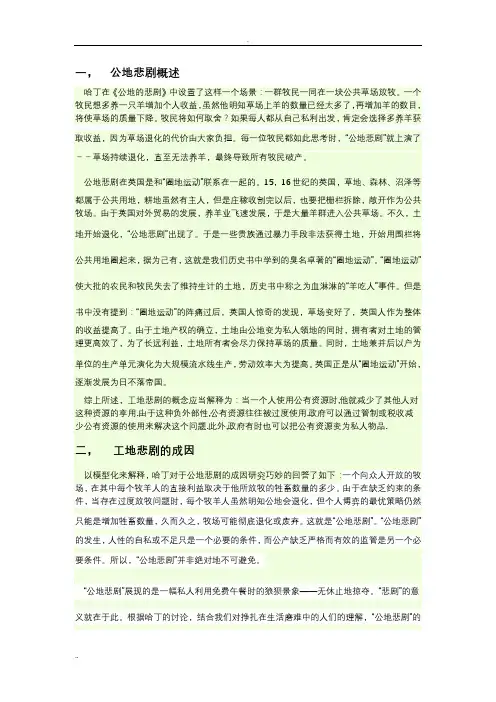
一,公地悲剧概述哈丁在《公地的悲剧》中设置了这样一个场景:一群牧民一同在一块公共草场放牧。
一个牧民想多养一只羊增加个人收益,虽然他明知草场上羊的数量已经太多了,再增加羊的数目,将使草场的质量下降。
牧民将如何取舍?如果每人都从自己私利出发,肯定会选择多养羊获取收益,因为草场退化的代价由大家负担。
每一位牧民都如此思考时,“公地悲剧”就上演了--草场持续退化,直至无法养羊,最终导致所有牧民破产。
公地悲剧在英国是和“圈地运动”联系在一起的。
15,16世纪的英国,草地、森林、沼泽等都属于公共用地,耕地虽然有主人,但是庄稼收割完以后,也要把栅栏拆除,敞开作为公共牧场。
由于英国对外贸易的发展,养羊业飞速发展,于是大量羊群进入公共草场。
不久,土地开始退化,“公地悲剧”出现了。
于是一些贵族通过暴力手段非法获得土地,开始用围栏将公共用地圈起来,据为己有,这就是我们历史书中学到的臭名卓著的“圈地运动”。
“圈地运动”使大批的农民和牧民失去了维持生计的土地,历史书中称之为血淋淋的“羊吃人”事件。
但是书中没有提到:“圈地运动”的阵痛过后,英国人惊奇的发现,草场变好了,英国人作为整体的收益提高了。
由于土地产权的确立,土地由公地变为私人领地的同时,拥有者对土地的管理更高效了,为了长远利益,土地所有者会尽力保持草场的质量。
同时,土地兼并后以户为单位的生产单元演化为大规模流水线生产,劳动效率大为提高。
英国正是从“圈地运动”开始,逐渐发展为日不落帝国。
综上所述,工地悲剧的概念应当解释为:当一个人使用公有资源时,他就减少了其他人对这种资源的享用.由于这种负外部性,公有资源往往被过度使用.政府可以通过管制或税收减少公有资源的使用来解决这个问题.此外,政府有时也可以把公有资源变为私人物品.二,工地悲剧的成因以模型化来解释,哈丁对于公地悲剧的成因研究巧妙的回答了如下:一个向众人开放的牧场,在其中每个牧羊人的直接利益取决于他所放牧的牲畜数量的多少。
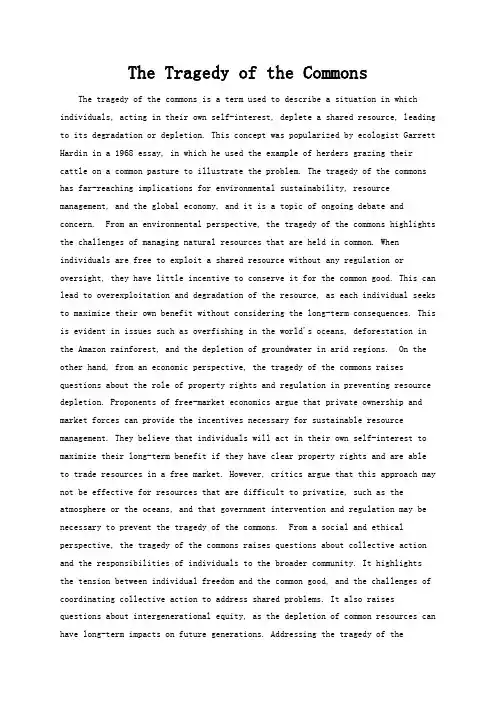
The Tragedy of the Commons The tragedy of the commons is a term used to describe a situation in which individuals, acting in their own self-interest, deplete a shared resource, leading to its degradation or depletion. This concept was popularized by ecologist Garrett Hardin in a 1968 essay, in which he used the example of herders grazing their cattle on a common pasture to illustrate the problem. The tragedy of the commons has far-reaching implications for environmental sustainability, resource management, and the global economy, and it is a topic of ongoing debate and concern. From an environmental perspective, the tragedy of the commons highlights the challenges of managing natural resources that are held in common. When individuals are free to exploit a shared resource without any regulation or oversight, they have little incentive to conserve it for the common good. This can lead to overexploitation and degradation of the resource, as each individual seeks to maximize their own benefit without considering the long-term consequences. This is evident in issues such as overfishing in the world's oceans, deforestation in the Amazon rainforest, and the depletion of groundwater in arid regions. On the other hand, from an economic perspective, the tragedy of the commons raises questions about the role of property rights and regulation in preventing resource depletion. Proponents of free-market economics argue that private ownership and market forces can provide the incentives necessary for sustainable resource management. They believe that individuals will act in their own self-interest to maximize their long-term benefit if they have clear property rights and are able to trade resources in a free market. However, critics argue that this approach may not be effective for resources that are difficult to privatize, such as the atmosphere or the oceans, and that government intervention and regulation may be necessary to prevent the tragedy of the commons. From a social and ethical perspective, the tragedy of the commons raises questions about collective action and the responsibilities of individuals to the broader community. It highlights the tension between individual freedom and the common good, and the challenges of coordinating collective action to address shared problems. It also raises questions about intergenerational equity, as the depletion of common resources can have long-term impacts on future generations. Addressing the tragedy of thecommons requires not only technical solutions, but also changes in human behavior, social norms, and values. From a global perspective, the tragedy of the commons has implications for international cooperation and governance. Many of the world's most pressing environmental challenges, such as climate change and biodiversity loss, are global in nature and require coordinated action among countries. However, the tragedy of the commons can lead to a "free rider" problem, in which countries have an incentive to shirk their responsibilities and let others bear the costs of conservation. Overcoming this problem requires international agreements, institutions, and mechanisms for collective action, as well as a recognition ofthe interconnectedness of human societies and the natural world. In conclusion, the tragedy of the commons is a complex and multifaceted problem with implications for environmental sustainability, resource management, economics, ethics, and global governance. Addressing this problem requires a holistic andinterdisciplinary approach, taking into account the perspectives of ecology, economics, sociology, and politics. It also requires a recognition of the interconnectedness of human societies and the natural world, and the need for collective action to address shared challenges. While the tragedy of the commons presents significant challenges, it also provides opportunities for innovation, cooperation, and the reimagining of human relationships with the natural world.。
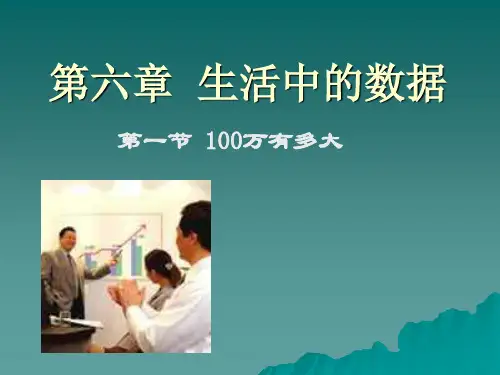
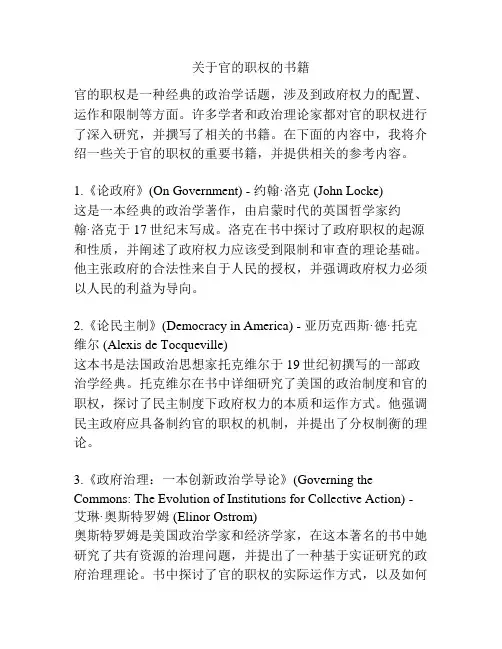
关于官的职权的书籍官的职权是一种经典的政治学话题,涉及到政府权力的配置、运作和限制等方面。
许多学者和政治理论家都对官的职权进行了深入研究,并撰写了相关的书籍。
在下面的内容中,我将介绍一些关于官的职权的重要书籍,并提供相关的参考内容。
1.《论政府》(On Government) - 约翰·洛克 (John Locke)这是一本经典的政治学著作,由启蒙时代的英国哲学家约翰·洛克于17世纪末写成。
洛克在书中探讨了政府职权的起源和性质,并阐述了政府权力应该受到限制和审查的理论基础。
他主张政府的合法性来自于人民的授权,并强调政府权力必须以人民的利益为导向。
2.《论民主制》(Democracy in America) - 亚历克西斯·德·托克维尔 (Alexis de Tocqueville)这本书是法国政治思想家托克维尔于19世纪初撰写的一部政治学经典。
托克维尔在书中详细研究了美国的政治制度和官的职权,探讨了民主制度下政府权力的本质和运作方式。
他强调民主政府应具备制约官的职权的机制,并提出了分权制衡的理论。
3.《政府治理:一本创新政治学导论》(Governing the Commons: The Evolution of Institutions for Collective Action) - 艾琳·奥斯特罗姆 (Elinor Ostrom)奥斯特罗姆是美国政治学家和经济学家,在这本著名的书中她研究了共有资源的治理问题,并提出了一种基于实证研究的政府治理理论。
书中探讨了官的职权的实际运作方式,以及如何通过建立合作和共享权力的机制来有效治理共有资源。
4.《官的常识》(The Logic of Collective Action: Public Goodsand the Theory of Groups) - M·奥尔斯托姆 (Mancur Olson)奥尔森是美国政治学家,他在这本著作中提出了一种理论,解释了为什么官的职权通常容易受到利益集团和特殊利益的影响。
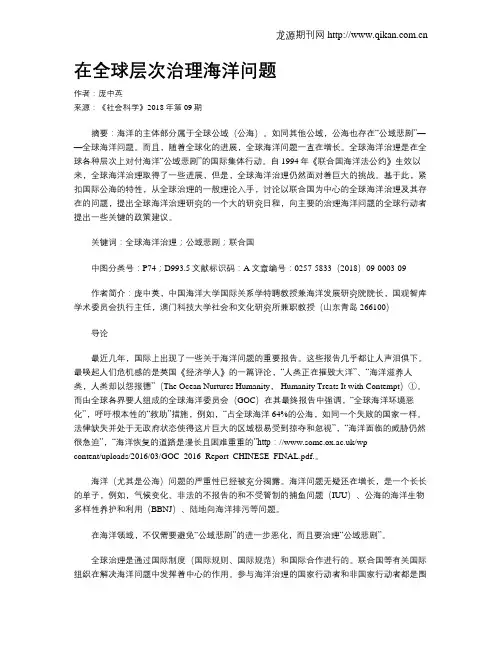
在全球层次治理海洋问题作者:庞中英来源:《社会科学》2018年第09期摘要:海洋的主体部分属于全球公域(公海)。
如同其他公域,公海也存在“公域悲剧”——全球海洋问题。
而且,随着全球化的进展,全球海洋问题一直在增长。
全球海洋治理是在全球各种层次上对付海洋“公域悲剧”的国际集体行动。
自1994年《联合国海洋法公约》生效以来,全球海洋治理取得了一些进展,但是,全球海洋治理仍然面对着巨大的挑战。
基于此,紧扣国际公海的特性,从全球治理的一般理论入手,讨论以联合国为中心的全球海洋治理及其存在的问题,提出全球海洋治理研究的一个大的研究日程,向主要的治理海洋问题的全球行动者提出一些关键的政策建议。
关键词:全球海洋治理;公域悲剧;联合国中图分类号:P74;D993.5文献标识码:A文章编号:0257-5833(2018)09-0003-09作者简介:庞中英,中国海洋大学国际关系学特聘教授兼海洋发展研究院院长,国观智库学术委员会执行主任,澳门科技大学社会和文化研究所兼职教授(山东青岛266100)导论最近几年,国际上出现了一些关于海洋问题的重要报告。
这些报告几乎都让人声泪俱下。
最唤起人们危机感的是英国《经济学人》的一篇评论,“人类正在摧毁大洋”、“海洋滋养人类,人类却以怨报德”(The Ocean Nurtures Humanity, Humanity Treats It with Contempt)①。
而由全球各界要人组成的全球海洋委员会(GOC)在其最终报告中强调,“全球海洋环境恶化”,呼吁根本性的“救助”措施,例如,“占全球海洋64%的公海,如同一个失败的国家一样。
法律缺失并处于无政府状态使得这片巨大的区域极易受到掠夺和忽视”,“海洋面临的威胁仍然很急迫”,“海洋恢复的道路是漫长且困难重重的”http:///wp-content/uploads/2016/03/GOC_2016_Report_CHINESE_FINAL.pdf.。
Tragedy of the commons by Elinor OstromFrom The New Palgrave Dictionary of Economics, Second Edition, 2008Edited by Steven N. Durlauf and Lawrence E. BlumeBack to topAbstract‘The tragedy of the commons’ arises when it is difficult and costly to exclude potential users from common-pool resources that yield finite flows of benefits, as a result of which those resources will be exhausted by rational, utility-maximizing individuals rather than conserved for the benefit of all. Pessimism about the possibility of users voluntarily cooperating to prevent overuse has led to widespread central control of common-pool resources. But such control has itself frequently resulted in resource overuse. In practice, especially where they can communicate, users often develop rules that limit resource use and conserve resources.Back to topKeywordscollective action; common-pool resources; common property; free rider problem; Hardin, G.; open-access resources; private property; social dilemmas; state property; tragedy of the commonsBack to topArticleThe term ‘the tragedy of the commons’ was first introduced by Garrett Hardin (1968) in an important article in Science. Hardin asked us to envision a pasture ‘open to all’ in which each herder received large benefits from selling his or her own animals while facing only small costs of overgrazing. When the number of animals exceeds the capacity of the pasture, each herder is still motivated to add more animals since the herder receives all of the proceeds from the sale of animals and only a partial share of the cost of overgrazing. Hardin (1968, p. 1244) concluded: Therein is the tragedy. Each man is locked into a system that compels him to increase his herd without limit – in a world that is limited. Ruin is the destination toward which all men rush, each pursuing his own best interest in a society that believes in the freedom of the commons.Hardin's article is one of the most cited publications of recent times as well as among the most influential for ecologists and environmental policy researchers. Almost all textbooks on environmental policy cite Hardin's article and discuss the problem that Hardin so graphically identified.Hardin's article deals in general with a broad class of resources that are referred to in the more technical literature as ‘common-pool resources’. Common-pool resources yield finite flows of benefits (such as firewood, fish and water) where it is difficult and costly to exclude potential users (Ostrom, Gardner and Walker, 1994). Each person's use of a resource system subtracts resource units from the quantity of units available to others, as Hardin so dramatically described. The initial theoretical studies of common-pool resources tended to analyse simple systems. It hasfrequently been assumed that the resource generates a predictable, finite supply of one type of resource unit (for example, cubic feet of water or tons of fish) in each time period. Users are assumed to be short-term, profit-maximizing actors who have complete information and are homogeneous in terms of their assets, skills, discount rates and cultural views. In this theory, anyone can enter a resource and take resource units.Hardin thought of users as being trapped in this situation – largely because he did not envision that users could self-organize and devise institutions to extract themselves from tragic overuse.In the conventional textbook theory (Clark, 1976), scholars have tended to agree with Hardin that the users could not extract themselves from this situation. Organizing so as to create rules that specify who is an authorized user and the rights and duties of authorized users creates a public good for those involved. All users benefit from this public good, whether they contribute or not (Olson, 1965). Thus, getting ‘out of the trap’ is itself a second-level dilemma. Since much of the initial problem exists because the individuals are in a dilemma whereby they impose negative externalities on one another, it is not consistent with the conventional theory that individuals can solve a second-level dilemma when they are already predicted to be unable to solve the initial social dilemma. Thus, extensive free-riding is predicted in most efforts to self-organize and govern a resource as a community of users.Because of these predictions and because many open-access resources have indeed resulted in tragic levels of overuse and sometimes destruction, many scholars and public officials have relied upon the conventional analysis to justify the need for centralized control of all common-pool resources. National legislation has been passed in many countries, and administrative responsibilities for managing natural resources have been turned over to centralized agencies. Unfortunately, the results of many of these efforts have been the opposite of what was hoped. Evidence has now been amassed that central regulation has frequently accelerated resource deterioration, complicated by several problems of corruption and inefficiency. In-depth case analyses have documented the accelerated overharvesting of forests that occurred after national governments declared themselves to be the owners of forested land (National Research Council, 1986; Ascher, 1995). Similar problems have occurred with inshore fisheries when national agencies presumed that they had exclusive jurisdiction over all coastal waters (Finlayson and McCay, 1998).Policy analysts tend to look for certainty and want to know whether the tragedy of the commons theory is either right or wrong. A more productive approach is to ask under what conditions it is correct and when it makes the wrong predictions. In settings where there is a large group, no one communicates, and where no rights to the resource exist, Hardin's theory is supported by considerable evidence. There are many settings in the world where the tragedy of the commons has occurred and continues to occur – ocean fisheries and the atmosphere being the most obvious. Contrary to the conventional theory, however, multiple studies have demonstrated that users have overcome social dilemmas to craft institutions to govern their own resources (National Research Council, 1986; 2002; McCay and Acheson, 1987; Ostrom, 1990; 2005). The possibility, however, that the users would find ways to organize themselves was not mentioned in basic economic textbooks on environmental problems until recently (compare Clark, 1976, with Hackett, 1998). The design principles that characterize robust, long-lasting, institutional arrangements for the governance of common-pool resources have been identified (Ostrom, 1990) and supported by further testing (Guillet, 1992; Morrow and Hull, 1996; Weinstein, 2000).A recent National Research Council (2002) report provides an excellent overview of the substantial research showing that many common-pool resources are governed successfully bynon-state provision units and that some government and private arrangements also succeed. No simple governance system has been shown to be successful in all settings (Dietz, Ostrom and Stern, 2003). Many of the robust resource governance systems documented in the above-cited research do not resemble the textbook versions of either a government or a strictly private for-profit firm, especially when participants have constituted self-governing units. Scholars who draw on traditional conceptions of ‘the market’ and ‘the state’ have not recognized these self-organized systems as potentially viable forms of organization and have either called for their removal or ignored their existence. It is paradoxical that many vibrant, self-governed institutions have been wrongly classified or ignored in an era that many observers consider to be one of ever greater democratization.Careful laboratory experiments have also shown that when a group of individuals are given unrestricted access to harvest from a common-pool resource, they substantially overuse it. What is rather striking is that in the laboratory using exactly the same parameters, but changing only one variable, namely, the capacity to communicate with one another, individuals can come to agreements and keep them to harvest very close to an optimal level (Ostrom, Gardner and Walker, 1994). This result has been replicated many times (see, for example, Casari and Plott, 2003).Thus, Hardin opened a discourse on a fascinating and difficult puzzle of why individuals in some settings can overcome the threat to long-term sustainable use of a resource whereas other resources are so threatened. Scholars from multiple disciplines have wrestled with this question for several decades, including the creation of the International Association for the Study of Common Property (IASCP), the Scientific Committee on Problems of the Environment (SCOPE) (see Burger et al., 2001), considerable research in the field and in the experimental laboratory, and the development of sophisticated agent-based models of human-environmental relationships (Janssen, 2003).In the decades since Hardin's article appeared, we have learned that the type of resource must be analysed separately from the type of property arrangement. Common-pool resources exist wherever natural resources or human-made facilities exist and where excluding users is costly and consumption by some subtracts from the benefits available to others. Many types of property arrangements exist in relationship to these kinds of resources, including government ownership, private property and common property. Hardin incorrectly presumed that most common-pool resources were open-access resources where property rights had not been well-defined.It is now known that the users of a common-pool resource will:•expend considerable time and energy devising workable institutions for governing•and managing common-pool resources;•follow costly rules so long as they believe that others also follow these rules;•monitor each other's conformity with these rules; and•impose sanctions on each other at a cost to themselves.The likelihood that resource users themselves will develop effective institutions for regulating the use of common-pool resources is increased by the following factors:•low discount rates (most resource users have secure tenure, and plan on using the resource for a long time into the future);•homogeneous interests (most resource users share similar technologies, skills, and cultural views of the resource);•the cost of communication among individuals is low; and•the cost of reaching binding and enforceable agreements is relatively low.Thus, in field settings where there are relatively small- to moderate-sized groups, and where there is autonomy to make their own agreements and authority to do so, many user groups have self-organized to extract themselves from the tragedy.Large groups have more difficulty governing common-pool resources, but usually because size is negatively associated with the factors listed above. In relatively homogeneous groups in which mechanisms exist for reaching binding agreements on methods of government and management resource use, even quite large groups are able to arrive at effective rules to limit the use of their resource. Further, when large groups are composed of smaller groups that focus on specific parts of a larger problem, such as how to regulate water distribution on a branch of an irrigation canal, smaller groups can be clustered into ever larger aggregations that may be able to address problems that affect all participants.One of the key findings of empirical field research on collective action and common-pool resources is the multiplicity of specific rules-in-use found in successful common-pool resource regimes around the world. One of the most important types of rules is boundary rules, which determine who has rights and responsibilities and what territory is covered by a particular governance unit. Many different boundary rules are used successfully to control common-pool resources around the world, but an important aspect of these rules is the match between the organization of users and the resource rather than the specific rule used. The 35th anniversary of the publication of Hardin's original article was celebrated with a special issue of Science (Dietz, Ostrom and Stern, 2003), demonstrating that all forms of ownership could succeed or fail and that more critical than the form of ownership was the establishment of legitimate and agreed-upon boundaries that were effectively enforced.Some governance units face considerable biophysical constraints in dealing with a natural common-pool resource such as a groundwater basin, a river or an air shed. Such resources have their own geographic boundaries, and creating a match between the boundary of those who are authorized users and the resource itself is a challenge. On the other hand, the biophysical world does not have as strong an impact on the efficacy of using diverse boundaries for governing and managing forest resources. More important is the agreement of those involved about who is to be included and the appropriate physical boundaries. Rules specifying duties as well as rules for sharing benefits are also crucial. No resource system functions well over time if all that users do is harvest from it with no investment to increase the productivity of the resource itself. Once basic rules – defining who is a legitimate beneficiary, who must contribute to the maintenance of the resource, and the actions that must or may be taken or are forbidden – have been accepted as legitimate by the users, many users will follow rules so long as they believe others are doing so. Another lesson learned is that any effort to develop new rules for governing and managing complex resources is likely to generate unexpected results and be subject to initial errors. Thus, all technological and institutional interventions need to be approached as an adaptive process that helps generate information about errors so that those involved and others can learn from errors rather than continue to make them. No panaceas exist. Wholesale solutions imposed on many different resources in a large terrain are more likely to be ineffective than efforts that enhance theinstitutional environment that encourages responsible self-governance, self-monitoring, and self-enforcement.Thus, a modified theory of the commons is slowly evolving that has identified the factors that are repeatedly mentioned in empirical studies of diverse common-pool resources.Back to topSee Also•access to land and development•collective action•common property resources•Olson, Mancur•property law, economics and•public goodsBack to topBibliographyAscher, W. 1995. Communities and Sustainable Forestry in Developing Countries. San Francisco: ICS Press.Burger, J., Ostrom, E., Norgaard, R., Policansky, D. and Goldstein, B. 2001. Protecting the Commons: A Framework for Resource Management in the Americas. Washington, DC: Island Press.Casari, M. and Plott, C. 2003. Decentralized management of common property resources: experiments with a centuries-old institution. Journal of Economic Behavior and Organization 51, 217–47.Clark, C. 1976. Mathematical Bioeconomics: The Optimal Management of Renewable Resources. New York: Wiley.Dietz, T., Ostrom, E. and Stern, P. 2003. The struggle to govern the commons. Science 302, 1907–12.Finlayson, A. and McCay, B.J. 1998. Crossing the threshold of ecosystem resilience: the commercial extinction of northern cod. In Linking Social and Ecological Systems: Management Practices and Social Mechanisms for Building Resilience, ed. F. Berkes and C. Folke. New York: Cambridge University Press.Guillet, D. 1992. Covering Ground: Communal Water Management and the State in the Peruvian Highlands. Ann Arbor: University of Michigan Press.Hackett, S. 1998. Environmental and Natural Resources Economics: Theory, Policy, and the Sustainable Society. Armonk, NY: M. E. Sharpe.Hardin, G. 1968. The tragedy of the commons. Science 162, 1243–8.Janssen, M., ed. 2003. Complexity and Ecosystem Management: The Theory and Practice of Multi-Agent Systems. Northampton, MA: Edward Elgar.McCay, B. and Acheson, J. 1987. The Question of the Commons: The Culture and Ecology of Communal Resources. Tucson: University of Arizona Press.Morrow, C. and Hull, R. 1996. Donor-initiated common pool resource institutions: the case of the Yanesha Forestry Cooperative. World Development 24, 1641–57.National Research Council. 1986. Proceedings of the Conference on Common Property Resource Management. Washington, DC: National Academy Press.National Research Council. 2002. The Drama of the Commons, Committee on the Human Dimensions of Global Change, ed. E. Ostrom, T. Dietz, N. Dolšak, P. Stern, S. S tonich and E. Weber. Washington, DC: National Academy Press.Olson, M. 1965. The Logic of Collective Action: Public Goods and the Theory of Groups. Cambridge, MA: Harvard University Press.Ostrom, E. 1990. Governing the Commons: The Evolution of Institutions for Collective Action. New York: Cambridge University Press.Ostrom, E. 2005. Understanding Institutional Diversity. Princeton, NJ: Princeton University Press.Ostrom, E., Gardner, R. and Walker, J. 1994. Rules, Games, and Common-Pool Resources. Ann Arbor: University of Michigan Press.Weinstein, M. 2000. Pieces of the puzzle: solutions for community-based fisheries management from native Canadians, Japanese cooperatives, and common property researchers. Georgetown International Environmental Law Review 12, 375–412.。
自哈丁(GHardin) 1968年明确指出"公地悲剧"(Tragedy of the Commons)以来,这一问题的重要总义逐渐为越来越多的人所认识。
最近,对治理公地悲剧有着深刻见解的埃莉诺•奥斯特罗姆(ElinorOstrom)获得了今年的诺贝尔经济学奖,这必将会进一步引发人们对该问题的思考。
简言乙“公地悲剧”泛指共同资源(CPR)易遭过度使用而岀现的悲剧性结果。
典型例子是公共牧场或漁场,由于具有向一切人开放的非排他性,所以牧民往往会过多放养羊只, 漁民往往会过度捕捞,从而出现竞争性的局面,进而迟早会导致草场退化或“竭泽而漁雹看上去,这两个例了有些边缘化,其实,公地悲剧问题具有更普遍的意义。
除了明显属于共同资源的多种情形Z外(如地下水、汕气田、无线电频率、同步卫星轨道等),考虑到共同资源的基木特征:非排他性和竞争性,公地悲剧问题的分析还有助于认识、把握和解决很多其他公共经济问题,比如个人滥用公费医疗制度导致其难以为继;乂如过多车辆同时使用道路导致严重拥堵等等。
因此,不妨把公地悲剧一・般化地理解为共同使用的悲剧,是具有非排他性和竞争性特征的物品都可能面临的命运。
既然公地悲剧的发生是个体理性行事的结果,由政府施加控制与管理就成为解决问题的首选方案。
不过,对公地悲剧发生的原因还另有一种解释,认为是由于产权界定失当造成的。
具体地,是认为公共产权导致了激励不足和福利损失,因为“最多的人共用的东西得到的照料最少',所以“公共苹果树上的苹果从来就不会长熟雹在这种解释下,将共有资源的产权私有化就成为解决问题的不二方案。
而奥斯特罗姆的突出贡献在于,在这两种“标准”答案Z 外提出和论证了第三种答案:在公共产权下的白我组织与管理。
在奥斯特罗姆获得诺奖后,有关评论大都高调赞扬了奥斯特罗姆的这一贡献,并指出其对于我国制定有关公共政策应有十分有益的启发,这无疑是有道理的。
但有关评论似也有意无意地流露出一种倾向,将奥斯特罗姆的观点奉为新的标准答案。
16前沿鲍勇剑 | 文布雷特·弗里施曼与“共同体经济学”只有从共同体经济学的角度,我们才能看待基建资源的社会属性,才能有效管理它。
以互联网为例,一般用户只看到应用软件层,其实,互联网从电信物理结构、软件逻辑基建资源是所有社会经济活动都离不开的,然而我们对它的认识远远落后于它在现代经济中日益增长的作用和变化。
传统的理论不能帮助我们系统地认识基建资源广泛而深刻的影响,也限制了我们的想象与选择。
认识并指导基建资源的治理,需要一项新的知识——共同体经济学。
为了帮助人们理解共同体经济学,鲍勇剑教授对共同体经济学的著名学者布雷特·弗里施曼进行了精彩的专访。
共同体经济学:基建资源的共同体共同体经济同体经济学体经济学:经济学:基学:基学:基建资:基建资源基建资源的建资源的资源的治理原理治理理原理鲍勇剑:加拿大莱桥大学迪隆商学院终身教授,复旦大学管理学院EMBA特聘教授——布雷特·弗里施曼教授专访结构、应用软件、内容到社交关系系统,层层叠叠有五层。
没有深层基础设施建筑(基建),不可能有互联网。
它凸显基础设施资源(Infrastructure resources)的重要性!事实上,所有社会经济活动都离不开基建。
传统rontier ierFrontier17清华管理评论 Tsinghua Business Review 2020年 第7-8期共同体经济学:基建资源的治理原理的基建有公路和铁路等,现代基建有电信设施和互联网络等。
基建是一种特殊的资源,是下游各行各业的生产要素。
从系统输入和输出的过程看,基建资源的输入能够促进多种多样和跨行业的输出。
只要具备上述属性,它就是基建资源。
我们对基建资源的认识远远落后于它在现代经济中日益增长的作用和变化。
首先,基建资源不只是有形的传统道路和公用设施,它包括一系列通用技术平台、知识产权体系、创新机制和社会文化设施。
它们的共性在于:1)是输入性生产要素(要素性);2)能促进下游行业多元多样的发展(衍生性);3)允许一定范围内共同使用,没有相互损害(共享性);4)做为平台式的通用技术,它在使用过程中连带出来各种各样的正面影响 (“溢出效应”,Spillover effects)。
TRAGEDY OF THE COMMONST000193‘The tragedy of the commons’ arises when it is difficult and costly to excludepotential users from common-pool resources that yield finite flows of benefits, asa result of which those resources will be exhausted by rational, utility-maximizing individuals rather than conserved for the benefit of all. Pessimismabout the possibility of users voluntarily cooperating to prevent overuse has led towidespread central control of common-pool resources. But such control has itselffrequently resulted in resource overuse. In practice, especially where they cancommunicate, users often develop rules that limit resource use and conserveresources.The term ‘the tragedy of the commons’ was first introduced by Garrett Hardin (1968) in an important article in Science. Hardin asked us to envision a pasture ‘open to all’ in which each herder received large benefits from selling his or her own animals while facing only small costs of overgrazing. When the number of animals exceeds the capacity of the pasture, each herder is still motivated to add more animals since the herder receives all of the proceeds from the sale of animals and only a partial share of the cost of overgrazing. Hardin (1968, p. 1244) concluded: Therein is the tragedy. Each man is locked into a system that compels him to increase his herd without limit – in a world that is limited. Ruin is the destination toward which allmen rush, each pursuing his own best interest in a society that believes in the freedom of the commons.Hardin’s article is one of the most cited publications of recent times as well as among the most influential for ecologists and environmental policy researchers. Almost all textbooks on environmental policy cite Hardin’s article and discuss the problem that Hardin so graphically identified.Hardin’s article deals in general with a broad class of resources that are referred to in the more technical literature as ‘common-pool resources’. Common-pool resources yield finite flows of benefits (such as firewood, fish, and water) where it is difficult and costly to exclude potential users (Ostrom, Gardner, and Walker, 1994). Each person’s use of a resource system subtracts resource units from the quantity of units available to others, as Hardin so dramatically described. The initial theoretical studies of common-pool resources tended to analyse simple systems. It has frequently been assumed that the resource generates a predictable, finite supply Uncorrected proof from The New Palgrave Dictionary of Economics 2nd edition.of one type of resource unit (for example, cubic feet of water or tons of fish) in each time period. Users are assumed to be short-term, profit-maximizing actors who have complete information and are homogeneous in terms of their assets, skills, discount rates, and cultural views. In this theory, anyone can enter a resource and take resource units.Hardin thought of users as being trapped in this situation – largely because he did not envision that users could self-organize and devise institutions to extract themselves from tragic overuse. In the conventional textbook theory (Clark, 1976), scholars have tended to agree with Hardin that the users could not extract themselves from this situation. Organizing so as to create rules that specify who is an authorized user and the rights and duties of authorized users creates a public good for those involved. All users benefit from this public good, whether they contribute or not (Olson, 1965). Thus, getting ‘out of the trap’ is itself a second-level dilemma. Since much of the initial problem exists because the individuals are in a dilemma whereby they impose negative externalities on one another, it is not consistent with the conventional theory that individuals can solve a second-level dilemma when they are already predicted to be unable to solve the initial social dilemma. Thus, extensive free-riding is predicted in most efforts to self-organize and govern a resource as a community of users.Because of these predictions and because many open-access resources have indeed resulted in tragic levels of overuse and sometimes destruction, many scholars and public officials have relied upon the conventional analysis to justify the need for centralized control of all common-pool resources. National legislation has been passed in many countries, and administrative responsibilities for managing natural resources have been turned over to centralized agencies. Unfortunately, the results of many of these efforts have been the opposite of what was hoped. Evidence has now been amassed that central regulation has frequently accelerated resource deterioration, complicated by several problems of corruption and inefficiency. In-depth case analyses have documented the accelerated overharvesting of forests that occurred after national governments declared themselves to be the owners of forested land (National Research Council, 1986; Ascher, 1995). Similar problems have occurred with inshore fisheries when national agencies presumed that they had exclusive jurisdiction over all coastal waters (Finlayson and McCay, 1998).Policy analysts tend to look for certainty and want to know whether the tragedy of the commons theory is either right or wrong. A more productive approach is to ask under what conditions it is correct and when it makes the wrong predictions. In settings where there is a large group, no one communicates, and where no rights to the resource exist, Hardin’s theory is supported by considerable evidence. There are many settings in the world where the tragedy of the commons has occurred and continues to occur – ocean fisheries and the atmosphere being the most obvious.Contrary to the conventional theory, however, multiple studies have demonstrated that users have overcome social dilemmas to craft institutions to govern their own resources (National Research Council, 1986; 2002; McCay and Acheson, 1987; Ostrom, 1990; 2005). The possibility, however, that the users would find ways to organize themselves was not mentioned in basic economic textbooks on environmental problems until recently (compare Clark, 1976, Uncorrected proof from The New Palgrave Dictionary of Economics 2nd edition.with Hackett, 1998). The design principles that characterize robust, long-lasting, institutional arrangements for the governance of common-pool resources have been identified (Ostrom, 1990) and supported by further testing (Guillet, 1992; Morrow and Hull, 1996; Weinstein, 2000).A recent National Research Council (2002) report provides an excellent overview of the substantial research showing that many common-pool resources are governed successfully by non-state provision units and that some government and private arrangements also succeed. No simple governance system has been shown to be successful in all settings (Dietz, Ostrom, and Stern, 2003). Many of the robust, resource governance systems documented in the above-cited research do not resemble the textbook versions of either a government or a strictly private for-profit firm, especially when participants have constituted self-governing units. Scholars who draw on traditional conceptions of ‘the market’ and ‘the state’ have not recognized these self-organized systems as potentially viable forms of organization and have either called for their removal or ignored their existence. It is paradoxical that many vibrant, self-governed institutions have been wrongly classified or ignored in an era that many observers consider to be one of ever greater democratization.Careful laboratory experiments have also shown that when a group of individuals are given unrestricted access to harvest from a common-pool resource, they substantially overuse it. What is rather striking is that in the laboratory using exactly the same parameters, but changing only one variable, namely, the capacity to communicate with one another, individuals can come to agreements and keep them to harvest very close to an optimal level (Ostrom, Gardner, and Walker, 1994). This result has been replicated many times (see, for example, Casari and Plott, 2003).Thus, Hardin opened a discourse on a fascinating and difficult puzzle of why individuals in some settings can overcome the threat to long-term sustainable use of a resource whereas other resources are so threatened. Scholars from multiple disciplines have wrestled with this question for several decades, including the creation of the International Association for the Study of Common Property (IASCP), the Scientific Committee on Problems of the Environment (SCOPE) (see Burger et al., 2001), considerable research in the field and in the experimental laboratory, and the development of sophisticated agent-based models of human-environmental relationships (Janssen, 2003).In the decades since Hardin’s article appeared, we have learned that the type of resource must be analysed separately from the type of property arrangement. Common-pool resources exist wherever natural resources or human-made facilities exist and where excluding users is costly and consumption by some subtracts from the benefits available to others. Many types of property arrangements exist in relationship to these kinds of resources, including government ownership, private property, and common property. Hardin incorrectly presumed that most common-pool resources were open-access resources where property rights had not been well-defined.It is now known that the users of a common-pool resource will:Uncorrected proof from The New Palgrave Dictionary of Economics 2nd edition.•expend considerable time and energy devising workable institutions for governing •and managing common-pool resources;•follow costly rules so long as they believe that others also follow these rules;•monitor each other’s conformity with these rules; and•impose sanctions on each other at a cost to themselves.The likelihood that resource users themselves will develop effective institutions for regulating the use of common-pool resources is increased by the following factors: •low discount rates (most resource users have secure tenure, and plan on using the resource for a long time into the future);•homogeneous interests (most resource users share similar technologies, skills, and cultural views of the resource);•the cost of communication among individuals is low; and•the cost of reaching binding and enforceable agreements is relatively low.Thus, in field settings where there are relatively small- to moderate-sized groups, and where there is autonomy to make their own agreements and authority to do so, many user groups have self-organized to extract themselves from the tragedy.Large groups have more difficulty governing common-pool resources, but usually because size is negatively associated with the factors listed above. In relatively homogeneous groups in which mechanisms exist for reaching binding agreements on methods of government and management resource use, even quite large groups are able to arrive at effective rules to limit the use of their resource. Further, when large groups are composed of smaller groups that focus on specific parts of a larger problem, such as how to regulate water distribution on a branch of an irrigation canal, smaller groups can be clustered into ever larger aggregations that may be able to address problems that affect all participants.One of the key findings of empirical field research on collective action and common-pool resources is the multiplicity of specific rules-in-use found in successful common-pool resource regimes around the world. One of the most important types of rules is boundary rules, which determine who has rights and responsibilities and what territory is covered by a particular governance unit. Many different boundary rules are used successfully to control common-pool resources around the world, but an important aspect of these rules is the match between the organization of users and the resource rather than the specific rule used. The 35th anniversary of the publication of Hardin’s original article was celebrated with a special issue of Science (Dietz, Ostrom, and Stern, 2003), demonstrating that all forms of ownership could succeed or fail andUncorrected proof from The New Palgrave Dictionary of Economics 2nd edition.that more critical than the form of ownership was the establishment of legitimate and agreed-upon boundaries that were effectively enforced.Some governance units face considerable biophysical constraints in dealing with a natural common-pool resource such as a groundwater basin, a river, or an air shed. Such resources have their own geographic boundaries, and creating a match between the boundary of those who are authorized users and the resource itself is a challenge. On the other hand, the biophysical world does not have as strong an impact on the efficacy of using diverse boundaries for governing and managing forest resources. More important is the agreement of those involved about who is to be included and the appropriate physical boundaries. Rules specifying duties as well as rules for sharing benefits are also crucial. No resource system functions well over time if all that users do is harvest from it with no investment to increase the productivity of the resource itself. Once basic rules – defining who is a legitimate beneficiary, who must contribute to the maintenance of the resource, and the actions that must or may be taken or are forbidden – have been accepted as legitimate by the users, many users will follow rules so long as they believe others are doing so.Another lesson learned is that any effort to develop new rules for governing and managing complex resources is likely to generate unexpected results and be subject to initial errors. Thus, all technological and institutional interventions need to be approached as an adaptive process that helps generate information about errors so that those involved and others can learn from errors rather than continue to make them. No panaceas exist. Wholesale solutions imposed on many different resources in a large terrain are more likely to be ineffective than efforts that enhance the institutional environment that encourages responsible self-governance, self-monitoring, and self-enforcement.Thus, a modified theory of the commons is slowly evolving that has identified the factors that are repeatedly mentioned in empirical studies of diverse common-pool resources.Elinor Ostrom See also access to land and development; common property resources; collective action; property law, economics and; Olson, Mancur; public goodsBibliographyAscher, W. 1995. Communities and Sustainable Forestry in Developing Countries. San Francisco: ICS Press.Burger, J., Ostrom, E., Norgaard, R., Policansky, D. and Goldstein, B. 2001. Protecting the Commons: A Framework for Resource Management in the Americas. Washington, DC: Island Press.Casari, M., and Plott, C. 2003. Decentralized management of common property resources: Experiments with a centuries-old institution. Journal of Economic Behavior and Organization 51, 217–47.Uncorrected proof from The New Palgrave Dictionary of Economics 2nd edition.Clark, C. 1976. Mathematical Bioeconomics: The Optimal Management of Renewable Resources. New York: Wiley.Dietz, T., Ostrom, E., and Stern, P. 2003. The struggle to govern the commons. Science 302, 1907–12.Finlayson, A. and McCay, B. J. 1998. Crossing the threshold of ecosystem resilience: the commercial extinction of northern cod. In Linking Social and Ecological Systems: Management Practices and Social Mechanisms for Building Resilience, ed. F. Berkes and C. Folke. New York: Cambridge University Press.Guillet, D. 1992. Covering Ground: Communal Water Management and the State in the Peruvian Highlands. Ann Arbor: University of Michigan Press.Hackett, S. 1998. Environmental and Natural Resources Economics: Theory, Policy, and the Sustainable Society. Armonk, NY: M. E. Sharpe.Hardin, G. 1968. The tragedy of the commons. Science 162, 1243–8.Janssen, M., ed. 2003. Complexity and Ecosystem Management: The Theory and Practice of Multi-Agent Systems. Northampton, MA: Edward Elgar.McCay, B. and Acheson, J. 1987. The Question of the Commons: The Culture and Ecology of Communal Resources. Tucson: University of Arizona Press.Morrow, C. and Hull, R. 1996. Donor-initiated common pool resource institutions: the case of the Yanesha Forestry Cooperative. World Development 24, 1641–57.National Research Council. 1986. Proceedings of the Conference on Common Property Resource Management. Washington, DC: National Academy Press.National Research Council. 2002. The Drama of the Commons, Committee on the Human Dimensions of Global Change, ed. E. Ostrom, T. Dietz, N. Dolšak, P. Stern, S. Stonich, and E. Weber. Washington, DC: National Academy Press.Olson, M. 1965. The Logic of Collective Action: Public Goods and the Theory of Groups. Cambridge, MA: Harvard University Press.Ostrom, E. 1990. Governing the Commons: The Evolution of Institutions for Collective Action. New York: Cambridge University Press.Ostrom, E. 2005. Understanding Institutional Diversity. Princeton, NJ: Princeton University Press.Ostrom, E., Gardner, R. and Walker, J. 1994. Rules, Games, and Common-Pool Resources. Ann Arbor: University of Michigan Press.Weinstein, M. 2000. Pieces of the puzzle: Solutions for community-based fisheries management from native Canadians, Japanese cooperatives, and common property researchers. Georgetown International Environmental Law Review 12, 375–412.Index termscollective actioncommon-pool resourcesUncorrected proof from The New Palgrave Dictionary of Economics 2nd edition.common propertyfree rider problemHardin, G.open-access resourcesprivate propertysocial dilemmasstate propertytragedy of the commonsUncorrected proof from The New Palgrave Dictionary of Economics 2nd edition.。